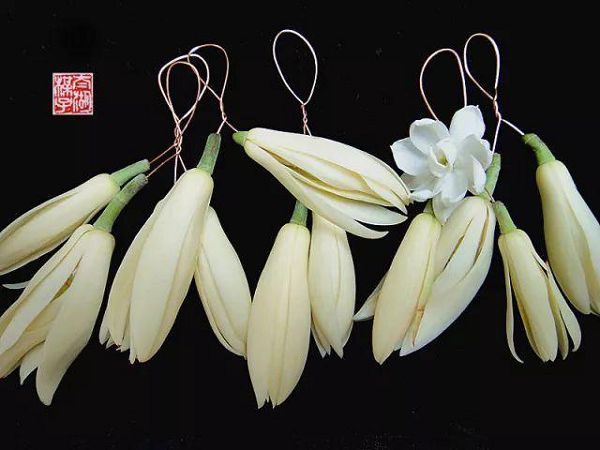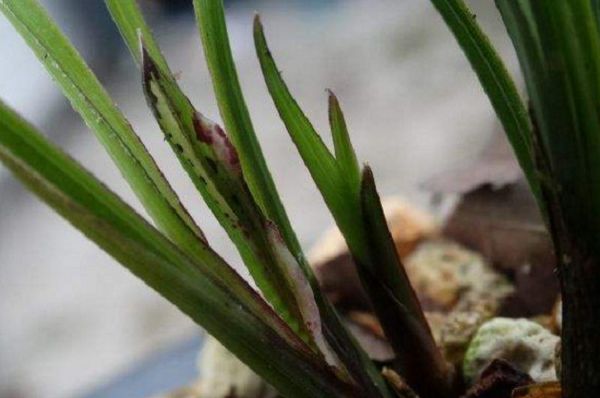Methods of cultivating Orchid in North China
In order to grow orchids well in northern areas, we should try to create suitable environmental conditions for their growth and development and meet the requirements of their biological characteristics in order to make them grow and bloom well. It is necessary to do the following work well.
one。 Choose good use basin and culture soil
In general, when families raise orchids, the choice of basin is better than mud basin. If you add beauty to the decorative effect, you can set a porcelain basin with colored glaze on the outside of the mud basin. The size of the basin is suitable for the orchid root to fully stretch in the basin. It is best to use orchid paste in potted soil. It can also be made by itself. It can be prepared with 6 parts of rotten leaf soil or peat soil, 3 parts of sandy soil, 1 part of cake fertilizer, or 5 parts of rotten leaf soil, 3 parts of compost soil and 2 parts of coarse sand. Pot method see: common sense and cultivation techniques of orchid selection.
two。 Watering should be moderate.
Watering orchids is not only a regular work, but also an important link in the success of orchid cultivation. The potted soil of orchids should always be kept moist, but avoid too much water content. In cultivation, the amount of water should be determined according to different seasons and different growth stages of orchids. Generally, starting from spring, with the rise of temperature, orchids turn to the vigorous growth period, and the amount of water should be gradually increased, watering once every two days; the summer temperature is high, and it is also the peak period of orchid growth, which is usually suitable for watering in the early morning and evening, and must not be watered at noon. With the advent of the rainy season, we should flexibly control the amount of watering according to the number of Rain Water and the dampness of the basin soil, and avoid the accumulation of water in the basin soil and cause root rot; at the end of autumn, the temperature begins to drop, and the amount of water should be gradually reduced and irrigated every 2-3 days; the winter temperature is low, most orchids enter the dormant period, and watering should be controlled at this time, but the watering of flowering ink orchids and cold orchids in winter should be more appropriate.
three。 Thin fertilizer should be applied skillfully.
Fertilize orchids to apply thin fertilizer, do not apply thick fertilizer, there are clear orchids, turbid jasmine said. Generally speaking, newly planted orchid plants are not suitable to be fertilized in the first year; they will be fertilized after the Qingming Festival in the second year until the Beginning of Autumn. Fertilizer and water of fully mature thin pancakes can be applied once or twice a month. As orchids are fleshy roots, do not apply unripe fertilizer to avoid rotting roots. The water should be controlled for 2 days before each fertilization, and then applied after the basin soil dries a little. Water should be watered once in the morning after application to prevent the root system from being contaminated by something unclean in the fertilizer solution. Attention should be paid to avoid splashing leaves when applying liquid fertilizer. For the orchid plants which have reached the flowering age after several years of cultivation, nitrogen fertilizer is mainly applied in the early stage to promote new bud germination and rapid growth, while phosphorus and potassium fertilizer is mainly applied in the later stage, which is beneficial to the enlargement of pseudobulbs, broad and thick leaves, and provide sufficient nutrients for flower bud differentiation. Specifically, liquid fertilizer dominated by phosphorus and potassium fertilizer should be applied twice every autumn before flower bud differentiation; during the budding period, the leaves should be washed with clean water in the evening on a sunny day, and then 0.2% potassium dihydrogen phosphate solution should be sprayed on the leaf surface and back with a small sprayer, or plant ash water should be applied to the root. At this time, extra-root fertilization is beneficial to promote the development of roots, stems and flowers of orchids. Two more liquid fertilizers or compound chemical fertilizers dominated by nitrogen fertilizer could promote plant growth about 20 days after flower shedding. Do not apply fertilizer on cloudy and rainy days, and stop applying fertilizer during winter dormancy.
Related
- Is the orchid suitable for indoor use? Is it good for the body?
- How to prevent the empty root of orchids?
- What to do after the crab claw orchid is withered?
- Why are the leaves of orchids always yellow? Fertilizing and watering.
- Can the root of the gentleman orchid be saved if it is rotten?
- Diagnosis and treatment of cotton-blowing beetle insects in Cymbidium
- There is a way for a gentleman's orchid to rot.
- What is the most suitable temperature and humidity for the orchid?
- How to raise a gentleman's orchid? Cultivation techniques of Cymbidium
- How to prepare the nutritive soil for the cultivation of Cymbidium



